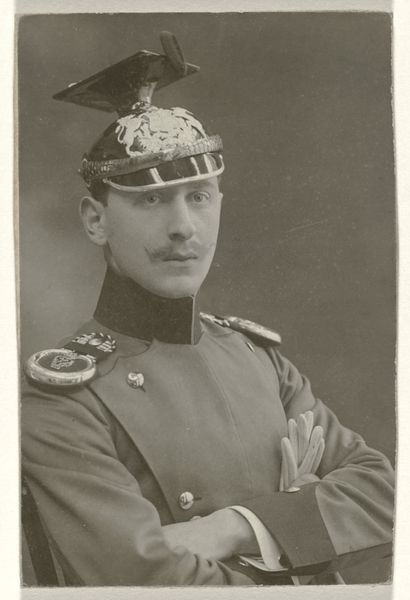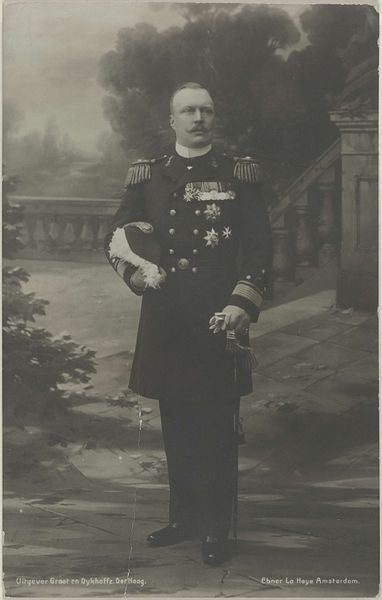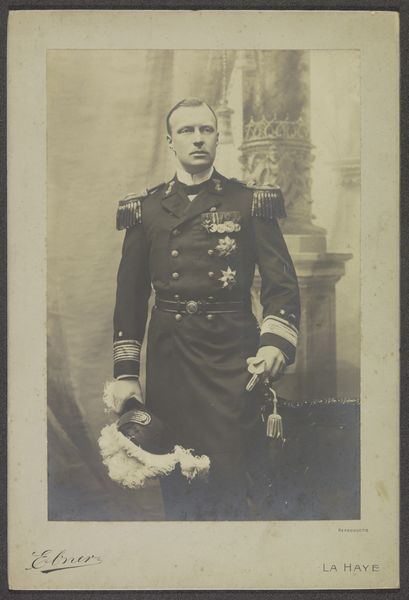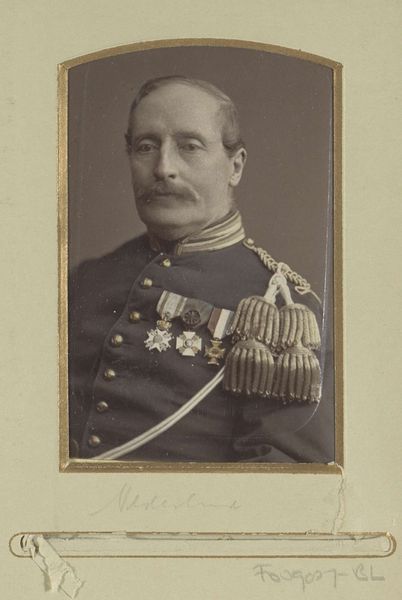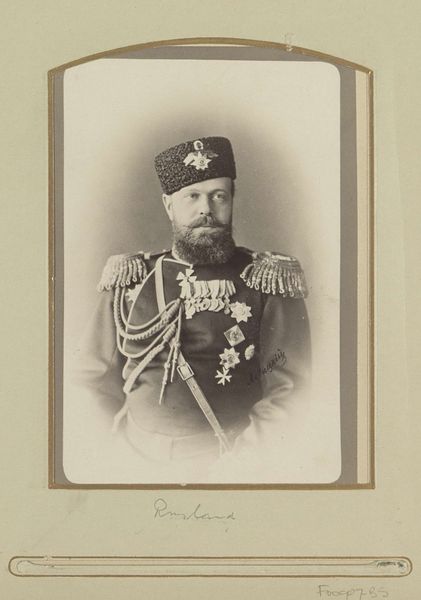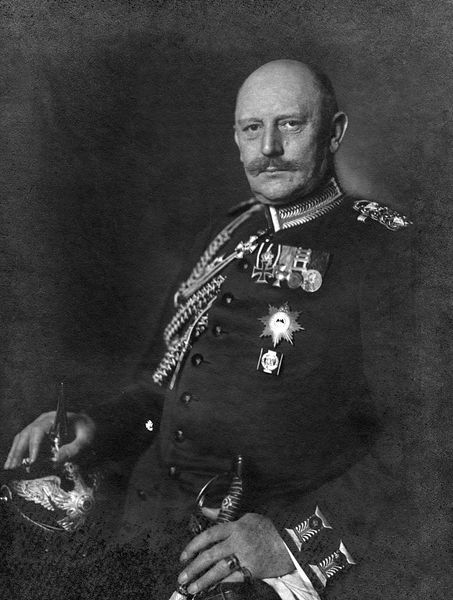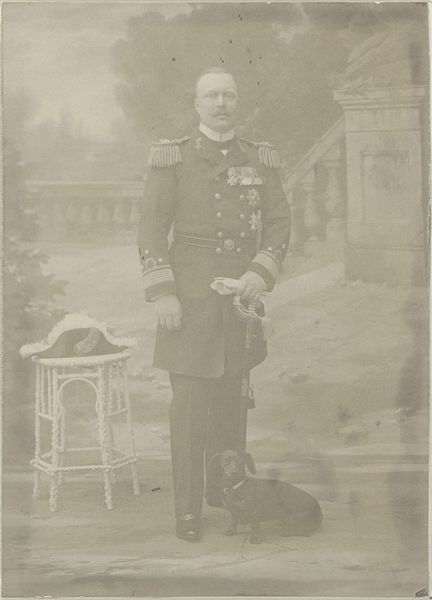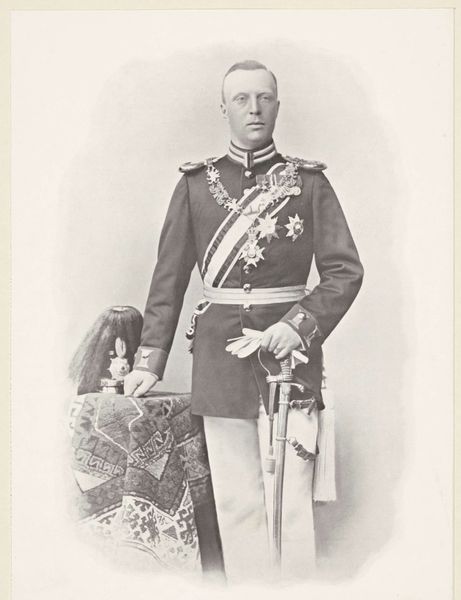
photomontage, photography, gelatin-silver-print
#
photomontage
#
caricature
#
archive photography
#
photography
#
historical photography
#
framed image
#
gelatin-silver-print
#
19th century
#
genre-painting
#
realism
Dimensions: height 145 mm, width 93 mm, height 165 mm, width 103 mm
Copyright: Rijks Museum: Open Domain
Curator: Here we have Ferdinand Robert Ebner’s gelatin-silver print, "Portret van Toto van Heemstra," created sometime between 1880 and 1920. It’s quite a striking portrait. Editor: It feels… weighted down. The figure is adorned, almost buried, under layers of regalia. I find myself immediately questioning the purpose of such elaborate displays of power. Curator: Indeed. Focusing on the visual elements, one cannot ignore the density of textures. The smooth, almost porcelain skin of the subject sharply contrasts with the intricate braiding and tassels of the uniform. The arrangement creates an interesting juxtaposition of softness and rigid ornamentation. Editor: And let’s not ignore the historical context. These displays of military might served a clear purpose. Imperialism demanded these visual assertions of dominance, a performance of unwavering authority crafted to intimidate both domestic populations and colonized subjects. It’s a loaded image. Curator: I see your point, but from a purely formal perspective, the light and shadow play across the different planes is captivating. Ebner clearly understood how to use light to create depth and volume within the limitations of early photography. The diagonal lines of the sashes, the careful rendering of each braid…it all speaks to a keen understanding of pictorial space. Editor: Agreed, there is technical skill evident. But I cannot separate this skill from the purpose it serves. Photography, particularly portraiture of this kind, became a powerful tool in solidifying existing power structures. Who was this “Toto van Heemstra” and what role did he play in upholding those structures? These are critical questions to ask. Curator: Perhaps, but let’s also consider the aesthetic value achieved through contrast, texture, and tonal variation. This print invites us to analyze the mechanics of image construction. The use of realism invites viewers to explore both internal and external elements such as lighting, framing, detail and social representation. Editor: Fair enough, yet ignoring the ideological underpinnings would be irresponsible. The very act of memorializing this man in such a manner reinforced and legitimized his place within a hierarchical system that privileged certain identities and actively oppressed others. Curator: A somber point, and an important layer in the interpretation of Ebner’s compelling photograph. Editor: Indeed, hopefully one that moves us to question these power dynamics that still reverberate today.
Comments
No comments
Be the first to comment and join the conversation on the ultimate creative platform.

